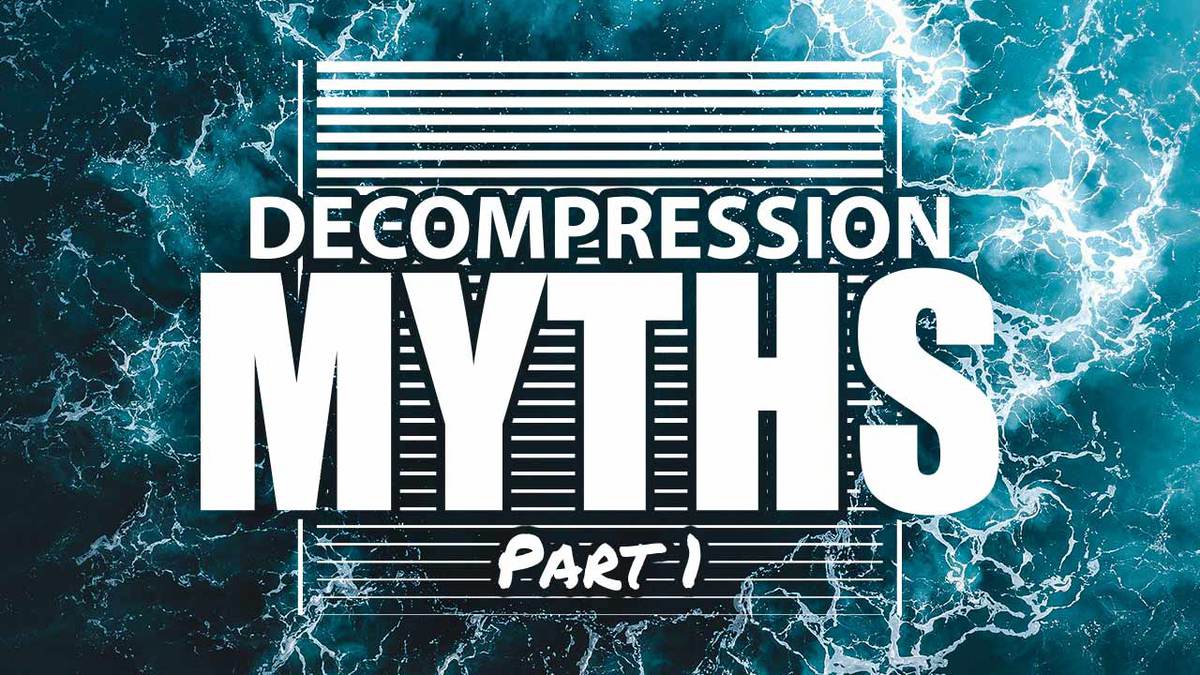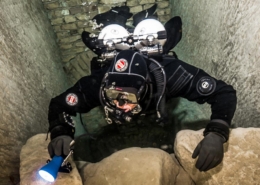Decompression Myths: Part 1
By: Mark Powell
In 2012 the US Government published a statement that there was no evidence that mermaids exist. This isn’t a joke; the story was widely reported and is still available online.
This wasn’t sensational news coverage or ‘fake news’ – The National Oceanic and Atmospheric Administration, a branch of the US Government, really did make that announcement and a version of the original page is still available on the NOAA website.
The article was prompted by the fact that NOAA was regularly being asked whether these creatures were real. These inquiries may have been caused by references in popular culture or by the growth of TV programs that purported to show that Bigfoot, the Loch Ness Monster, or mermaids actually exist. The article makes it clear that, although stories of mermaids have been around for thousands of years, they firmly belong in the category of mythical creatures and no evidence has ever been found that mermaids really exist. So, where did these myths come from? One explanation is that sailors and people who lived close to water might have seen dugong or manatees and mistaken them for creatures that were half human and half fish. Either way, it is clear that the myth of mermaids has been widely believed.
There are a whole other range of myths that are also widely believed. The term “urban legend” has been coined to describe more recent of these myths. As this article describes, it is not true that there are bodies buried in the concrete of the Hoover Dam, wedding rice will not make birds explode, we use much more than 10% of our brain capacity, and shaving hair does not make it grow back thicker.
Given how common myths have been in history and even in more modern times it is not surprising to discover that certain myths have grown up around decompression theory. While it may not matter in the real world whether mermaids exist or whether there are bodies of construction workers buried in the Hoover Dam, myths surrounding decompression theory have the potential to cause real-world problems and the potential for increasing the risk of decompression sickness. This article is designed to shine a light on some of these myths and to try to give the full picture in order improve your decompression safety.
If you are thinking that you don’t do decompression diving so this article is of limited interest to you, then you are exactly who this article is aimed at, as you have already fallen foul of the first myth – the myth of no-decompression diving. There is no such thing as a no-decompression dive.
MYTH – No-decompression dives involve zero decompression
When we descend we get compressed, and when we ascend we decompress, so all dives involve decompression. It is true that with some dives a controlled ascent is all the decompression we need but this is still decompression. These can legitimately be called no-stop dives but should not be called no-decompression dives.
This may seem a minor point but myths that seem harmless may not always be so. If you believe that there is a fundamental difference between decompression dives and no-decompression dives then this introduces a second myth. Namely that decompression dives are significantly riskier than no-decompression dives, or even worse, that decompression diving is dangerous while no-decompression diving is safe.
MYTH – Decompression diving is dangerous while no-deco diving is safe
Safe means the absence of risk and no-deco dives still carry risk. Rather then being a black and white difference between “safe” no-deco dives and “risky” decompression dives, the reality is more like shades of grey with a certain risk involved in no-deco diving that increases gradually as the amount of decompression increases. The real-world implication of this artificial distinction is that sport divers believe that something terrible will happen to them the instant they go past their no-stop limit, or worse, they panic when approaching or accidentally going past their no-stop limit and make rash decisions. There have been numerous cases of divers panicking in this situation and ending up with a rapid ascent and symptoms of DCS. The myth made them paranoid about the risk of DCS and this fear caused panic which led to the very thing they were afraid of in the first place. This is a very real implication of these types of myths. On the other hand, a diver that realises that the end of their no-stop time is just one point of a continuum of decompression, rather than a cliff edge, is more likely to maintain their buoyancy and do a controlled ascent. If they stay calm, they will realise that the few minutes of decompression stops that their computer is indicating is probably no longer than the safety stop they were planning on doing anyway.
MYTH – You can’t get bent on a no-stop dive
A related myth to “Deco diving is dangerous while no-deco diving is safe” is the myth that you cannot get bent on a no-stop dive. Decompression is not an exact science and there is always a risk of getting bent on a no-stop dive. In addition to the depth and time components of the dive, there are a whole host of other physiological factors such as exercise, temperature, hydration, medical and other issues that can increase the risk on a no-stop dive. In addition, the definition of a no-stop dive is one where you can ascend to the surface at the correct ascent rate without requiring additional decompression stops. One important phrase in that definition is “at the correct ascent rate”. Remember we said that in the case of a no-stop dive the ascent is sufficient decompression. If a diver has a rapid ascent, that ascent time may no longer be sufficient decompression and there is a higher risk of decompression sickness.
MYTH – You can’t get bent if you follow the tables
Another very closely related myth is that You can’t get bent if you follow the tables. In some ways we have already covered this. If you stay within the no-stop time there is still a risk of DCS. Even if we are planning a stage stop decompression dive and complete all the planned decompression stops, there is still a risk of decompression. Experienced divers know this already and will be nodding sagely at this point.
Everyone knows that this is a myth, right? Of course we do, and you might be wondering why I even need to state that it’s a myth. Well, the reason I include it is that, even though in our heads we know it’s a myth, one of the phrases I have heard on numerous occasions is some variation of “I don’t think I can be bent because I didn’t miss any stops/my computer doesn’t have any missed stops/my computer isn’t locked out”.
MYTH – You can’t get bent if you follow your computer
A dive computer is just an electronic display of a set of dive tables. This means that assuming that you can’t be bent if you follow your computer is no different to assuming you can’t be bent if you follow the tables. However, for some reason, divers place an additional level of trust in their dive computer. Your computer knows the dive profile you carried out but it doesn’t know your health and fitness levels, it doesn’t know your hydration levels, or your age, or the status of any number of other risk factors.
Decompression may seem like a dark art and that is the time when myths can start to emerge. It is worth spending some time understanding the principles behind decompression theory in order to clear up some of these myths and give yourself a clearer understanding of what is going on while we dive. Stay tuned for the next article in this series, where I will look at some other common diving myths!









 Natalie L. Gibb
Natalie L. Gibb
השאירו תגובה
רוצה להצטרף לדיון?תרגישו חופשי לתרום!